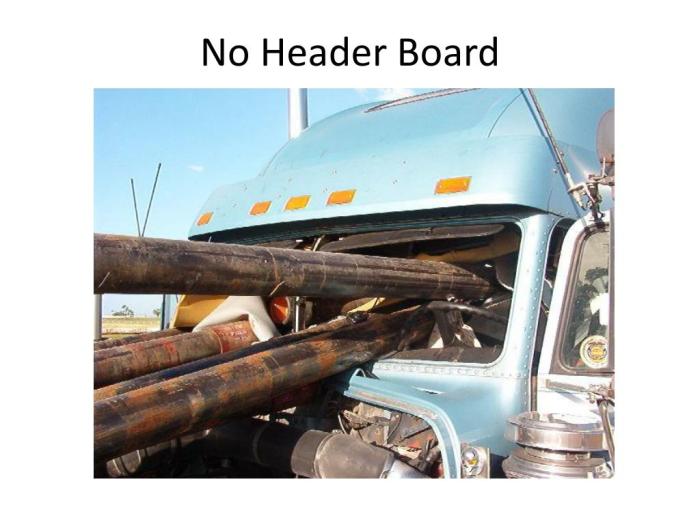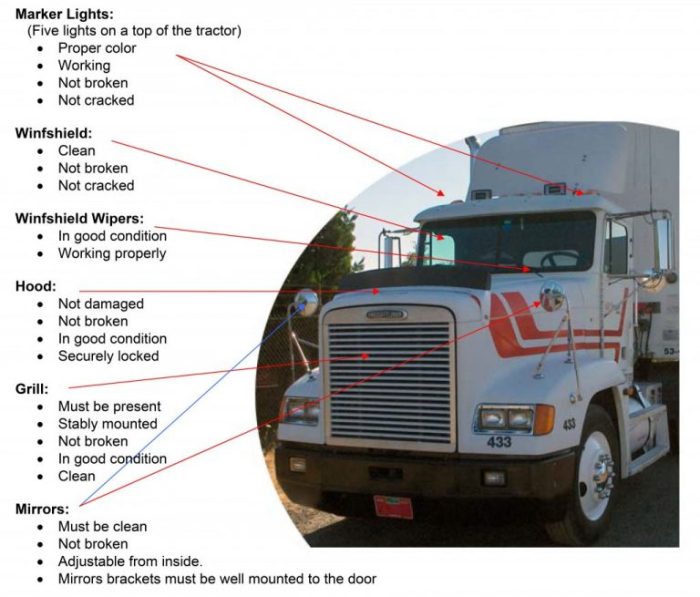What is a header boards cdl – Introducing the world of header boards CDL, a crucial aspect of commercial driving. Header boards serve as essential safety measures and legal requirements, playing a significant role in the industry. Dive into this comprehensive guide to unravel the intricacies of header boards, their regulations, construction, installation, and more.
From understanding their purpose to mastering their maintenance, this guide empowers you with the knowledge to navigate the world of header boards CDL with confidence and expertise.
Introduction

In the realm of commercial driving, “header boards cdl” refer to specialized endorsements that are added to a commercial driver’s license (CDL). These endorsements signify that the driver has undergone additional training and passed rigorous examinations to operate commercial motor vehicles (CMVs) equipped with header boards.
Header boards are large, rectangular panels that are mounted on the front of CMVs, typically used for advertising or promotional purposes. They provide an effective way to display company logos, slogans, or other marketing messages while the vehicle is in motion.
Regulations and Requirements

The use of header boards on commercial vehicles is governed by both federal and state regulations. These regulations ensure that header boards are used safely and effectively, and that they do not pose a hazard to other motorists.
Federal Regulations
- The Federal Motor Carrier Safety Administration (FMCSA) has established regulations governing the use of header boards on commercial vehicles. These regulations are found in the Federal Motor Carrier Safety Regulations (FMCSRs).
- The FMCSRs specify that header boards must be made of a durable material, such as metal or wood, and must be securely attached to the vehicle. They must also be of a size and weight that is appropriate for the vehicle.
- The FMCSRs also specify that header boards must be placed in a location where they will not obstruct the driver’s view of the road. They must also be placed in a way that will not interfere with the operation of the vehicle.
State Regulations
In addition to federal regulations, many states have their own regulations governing the use of header boards on commercial vehicles. These regulations vary from state to state, but they generally follow the same principles as the federal regulations.
It is important for drivers of commercial vehicles to be aware of the regulations governing the use of header boards in the states in which they operate. Failure to comply with these regulations can result in fines or other penalties.
Materials and Construction

Header boards, also known as headboard, are typically constructed using a variety of materials, each offering unique advantages and disadvantages.
The most common materials used in header board construction include wood, metal, and upholstered fabric.
Wood
- Advantages:Natural warmth and beauty, durability, easy to customize, can be stained or painted to match any décor.
- Disadvantages:Can be heavy, may require additional support, susceptible to scratches and dents.
Metal
- Advantages:Lightweight, durable, easy to clean, can be painted or powder-coated in a variety of colors.
- Disadvantages:Can be cold to the touch, may not be as comfortable as upholstered fabric, can be noisy if not properly secured.
Upholstered Fabric
- Advantages:Soft and comfortable, available in a wide range of fabrics and colors, can be customized to match any décor.
- Disadvantages:May require more frequent cleaning, can be more difficult to keep clean than wood or metal, may not be as durable as other materials.
Installation and Maintenance
Installing and maintaining header boards on commercial vehicles is crucial for safety and durability. Proper installation ensures optimal performance and longevity, while regular maintenance helps detect and address potential issues early on.
Header boards CDL, which serve as the foundation for various construction projects, are essential for ensuring structural stability. Their precision and durability are crucial. Speaking of precision, have you heard about conduit dies cut a taper of ? These specialized tools are used in electrical conduit installations to create precise tapers for secure connections.
Their accuracy ensures optimal electrical flow and minimizes potential hazards. Returning to header boards CDL, their versatility and reliability make them indispensable in modern construction.
Let’s dive into the step-by-step installation process and discuss regular maintenance procedures to keep your header boards in top condition.
Installation
- Gather materials:You’ll need the header board, mounting brackets, bolts, washers, and a drill or screwdriver.
- Determine mounting location:Measure and mark the desired location for the header board on the vehicle’s frame.
- Attach mounting brackets:Align the mounting brackets with the marks and secure them to the frame using bolts and washers.
- Position header board:Place the header board on the mounting brackets and align it properly.
- Secure header board:Tighten the bolts to secure the header board to the brackets.
Maintenance
- Regular inspections:Regularly inspect the header board for any damage, corrosion, or loose bolts.
- Tighten bolts:Check the tightness of the bolts and tighten them if necessary.
- Clean and lubricate:Clean the header board and lubricate any moving parts to prevent wear and tear.
- Replace damaged parts:If any part of the header board is damaged, replace it promptly to ensure safety.
Safety and Legal Considerations
Header boards are crucial for ensuring the safety of drivers and passengers in the event of a collision. They play a vital role in preventing the occupants from being ejected from the vehicle or suffering serious head injuries.
Negligence in using or maintaining header boards can lead to potential legal liabilities. Failure to install or maintain header boards in accordance with regulations may result in fines or even criminal charges in case of an accident.
Potential Legal Liabilities
- Negligence leading to injury or death
- Violation of safety regulations
- Failure to provide a safe work environment
Variations and Applications: What Is A Header Boards Cdl
Header boards come in various types, tailored to different commercial vehicle applications and industry-specific requirements. Some common variations include:
- Flat Header Boards:These are the most basic type, providing a flat surface for mounting lights and other accessories.
- Curved Header Boards:Designed to follow the contour of the vehicle’s roof, these boards offer a more aerodynamic profile.
- LED Header Boards:Equipped with integrated LED lights, these boards enhance visibility and safety, especially at night.
Specialized Header Boards
Beyond these standard types, specialized header boards cater to specific industries and purposes:
- Construction Header Boards:Designed for construction vehicles, these boards are typically heavy-duty and may include additional features like tool storage compartments.
- Refrigerated Truck Header Boards:Insulated and designed to maintain the temperature of refrigerated goods, these boards help prevent heat transfer.
- Utility Header Boards:Versatile and customizable, these boards can accommodate a wide range of accessories and equipment, making them suitable for various applications.
Industry Trends and Innovations

The commercial driving industry is constantly evolving, and header boards are no exception. In recent years, we have seen a number of emerging trends and technological advancements in the design and use of header boards.
One of the most significant trends is the increasing use of lightweight materials. Traditional header boards were made of heavy steel, but today many manufacturers are using aluminum or composite materials. These materials are lighter and more durable, which can improve fuel efficiency and reduce maintenance costs.
Another trend is the use of electronic controls. Traditional header boards were manually operated, but today many models are equipped with electronic controls. These controls make it easier to operate the header board and can also provide additional features, such as automatic height adjustment.
Finally, we are seeing a growing trend towards the use of header boards with integrated safety features. These features can include things like anti-pinch sensors and automatic shutoff switches. These features can help to prevent accidents and injuries.
The Future of Header Boards, What is a header boards cdl
The future of header boards in the commercial driving industry is bright. As the industry continues to evolve, we can expect to see even more innovative and advanced header boards. These header boards will be lighter, more durable, and more efficient than ever before.
They will also be equipped with the latest safety features to help prevent accidents and injuries.
Helpful Answers
What is the purpose of a header board CDL?
Header boards serve as highly visible markers on commercial vehicles, aiding in their identification and preventing rear-end collisions.
What are the regulations governing header boards CDL?
Federal and state regulations dictate the size, weight, and placement specifications for header boards on commercial vehicles.
How are header boards CDL installed?
Header boards are typically mounted on the front of trailers using brackets or bolts, ensuring secure attachment and optimal visibility.